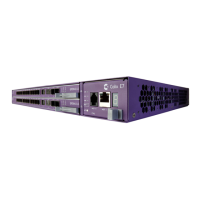105
Proprietary Information: Not for use or disclosure except by written agreement with Calix.
© Calix. All Rights Reserved.
Creating Data and Video Service Profiles
This section describes how to create profiles and objects that will be associated with data and
video services provisioned on a VDSL2 card xDSL port.
Creation of following profiles and objects are described:
Ethernet Bandwidth Profile for xDSL Services
Multicast Profile
DSL Vectoring Group
DSL Port Template
Ethernet Security Profile
PPPoE Profile
xDSL Bonded Interface
Next steps:
After completing the creation of profiles for data and video services, see the following
sections to continue configuring data and video services:
Configuring Data Services (on page 177)
Configuring IP Video Services (on page 189)
Creating an Ethernet Bandwidth Profile for xDSL Services
An Ethernet bandwidth profile is used to shape data traffic at a consistent rate by specifying
the upstream and downstream bandwidth rates to apply to individual Ethernet services on
xDSL ports, even when the modem is trained at a higher rate. Typically, a single bandwidth
profile is applied to many subscriber ports. Yet, for each level of data service, you need an
corresponding Ethernet Bandwidth Profile.
The Ethernet bandwidth profile on E-series VDSL2 cards and nodes rate limits traffic as
defined by the VLAN and the P-bit value settings applied to the Ethernet Service. For
example, if a bandwidth profile is applied to a service with a tag action that adds an outer
VLAN ID of 901 and a P-bit value of 0, traffic is rate limited for both upstream and
downstream against VLAN 901/P-bit 0. All traffic downstream that matches this VLAN/P-
bit combination is rate limited. If video is sent downstream with a different VLAN and/or P-
bit value, it is not rate limited. Note that if the P-bit value is not specifically assigned by the
service, all traffic in the VLAN is rate limited according to the setting in the Ethernet
bandwidth profile.
Each direction of a traffic shaper can be configured to provide a specific rate for the shaper.
Ethernet bandwidth profiles specify two settings to designate the rate:

